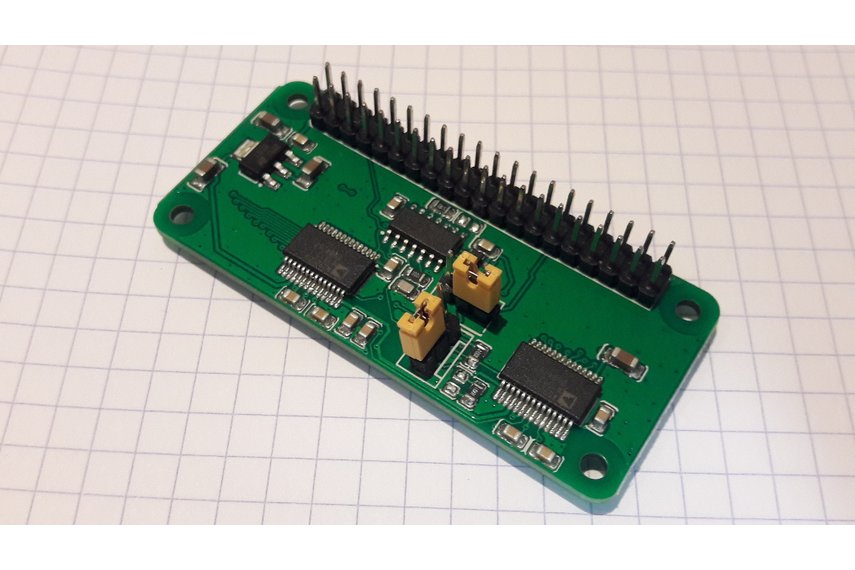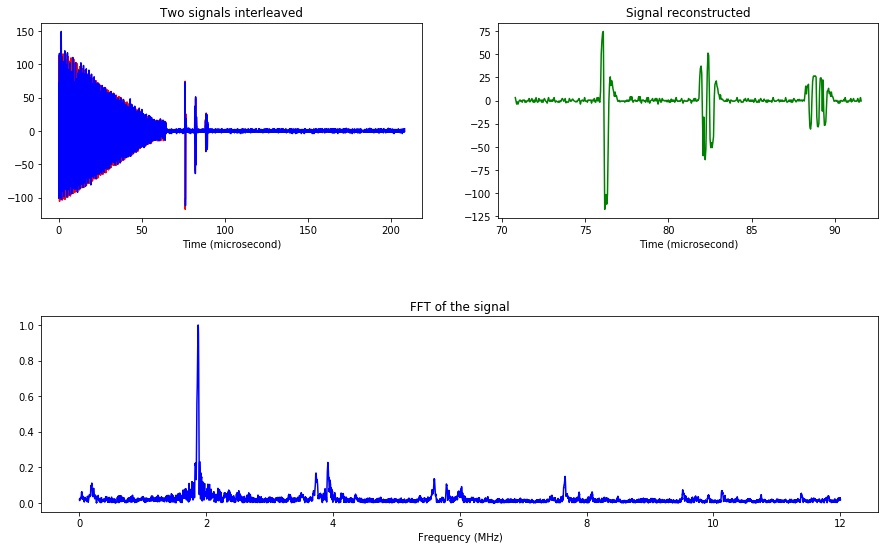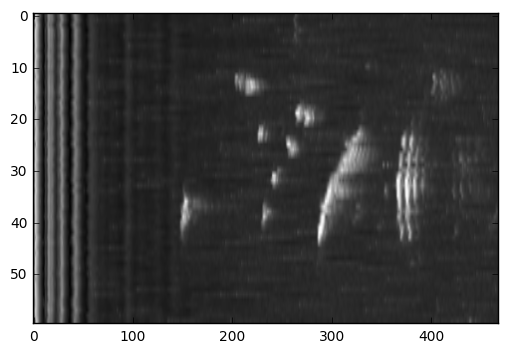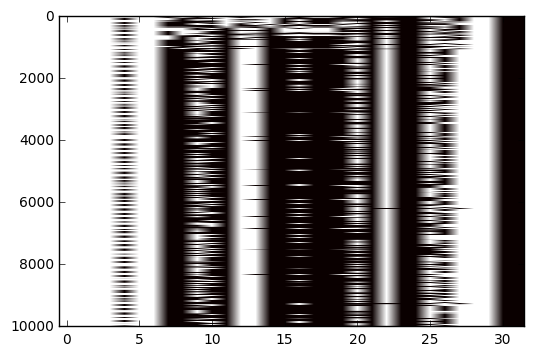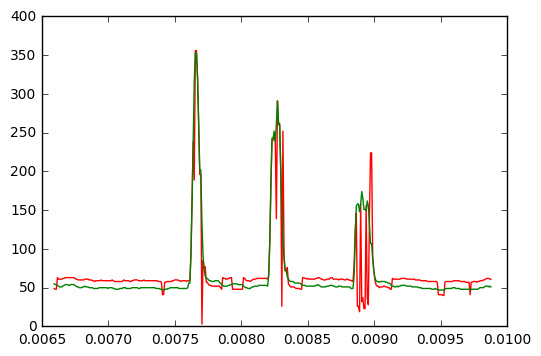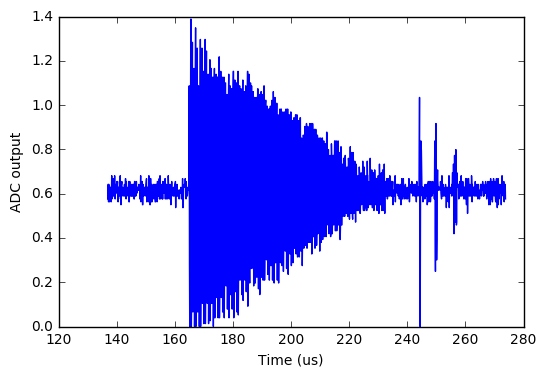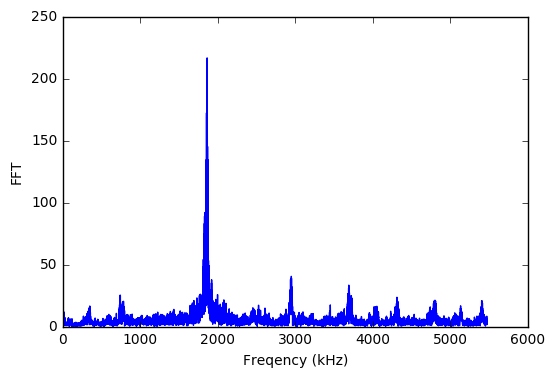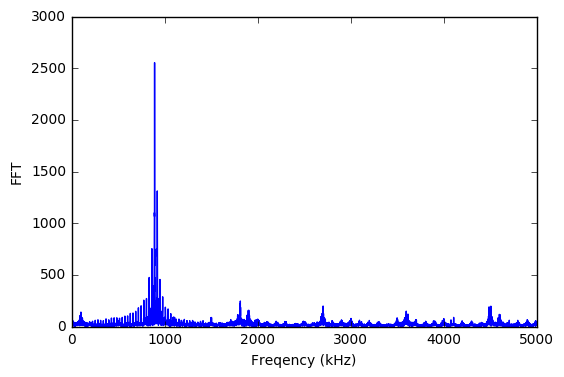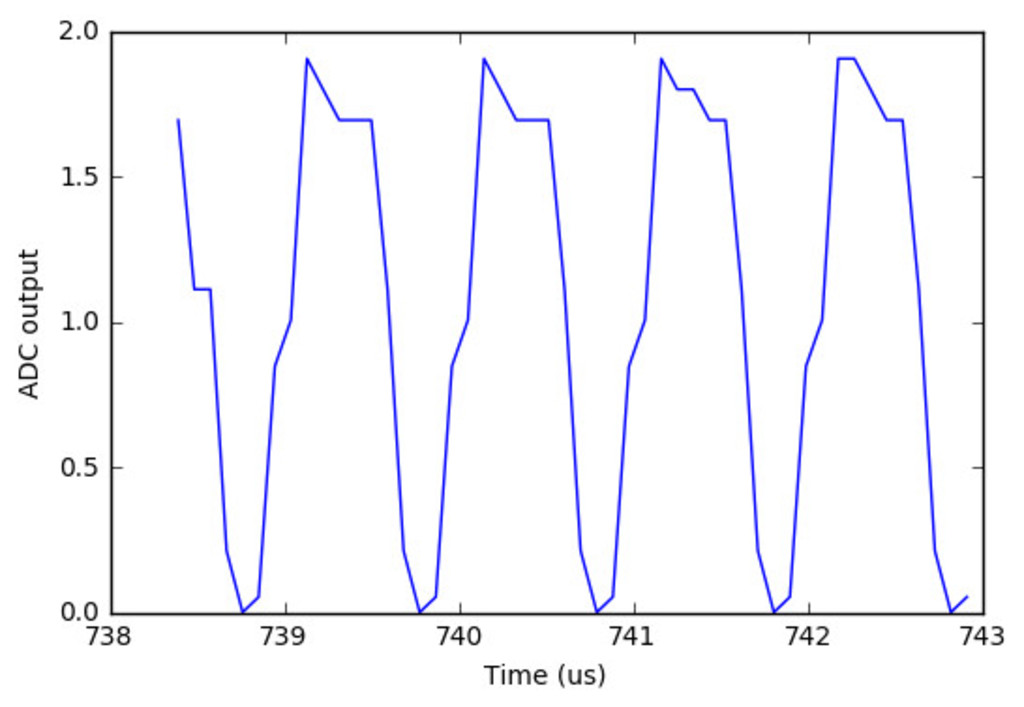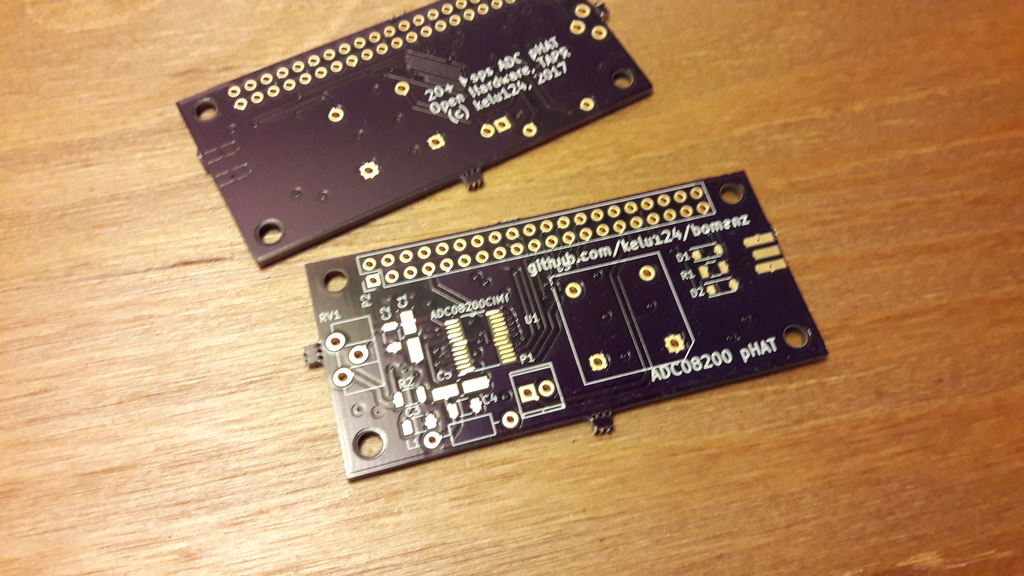-
A first batch on tindie!
10/06/2017 at 20:24 • 0 commentsI've finally got a first batch from the fab, and got a couple of them on tindie for experiments! https://www.tindie.com/products/kelu124/20msps-adc-cape-for-raspberry-pi/

-
Reaching 24Msps on a Pi Zero W!
07/13/2017 at 20:05 • 0 commentsYeah, that worked! Ultimately, I'm getting 20k points in 840us, so an equivalent of 24Msps. See below for more analysis on a signal at around 1.9 MHz:
 See the full log at https://github.com/kelu124/echomods/blob/master/elmo/data/20170713-TwoADCs.ipynb -- thanks to macrofab for their perfect PCBA role =)
See the full log at https://github.com/kelu124/echomods/blob/master/elmo/data/20170713-TwoADCs.ipynb -- thanks to macrofab for their perfect PCBA role =) -
Careful with soldering..
06/11/2017 at 22:37 • 0 commentsTLDR:
- I went to quick in soldering and maimed one of the two interleaved ADCs;
- Interleaved mode works!
- Biaising my signal by Vref/2 is not working. To solve.
- Am trying macrofab for small scale production!
I was still able to get a good ultrasound image with this ADC (see my other project on ultrasound imaging dev kit blog post):
 For general info, here's what the GPIO memory looks like during 10k samples at 10MHz =)
For general info, here's what the GPIO memory looks like during 10k samples at 10MHz =) and here's what 2 ADCs normally interleaved produce when one the ADCs has two output pins soldered together:
and here's what 2 ADCs normally interleaved produce when one the ADCs has two output pins soldered together: At least I still have one ADC to play with, and experiment!
At least I still have one ADC to play with, and experiment! -
Going into this 20Msps to 40Msps pHAT for Raspberry Pi
05/18/2017 at 20:11 • 0 commentsProblem and solution!
Problem was that the Pi0 or PiW, with the current kernel module, can't run faster than around 10 to 12 Msps. Clock can be faster, but the memcpy limits the transfer to memory. Soooo.. what can we do? As a reminder, I wanted at least a 10Msps 10bit ADC.
Solution Why not interleaving two ADCs, with clocks in opposite phase? Hum that means 2 times 10 bits, and I had only 18 pins left once the Ultrasound SDK board connected. That means.. quite obviously, 2 times 9 bits.
So now I can run at twice the speed of the transfer, so a bit over 20Msps, over this time 9 bits. Or by oversampling, that could be 10Msps at 10 bits. With more flexibility !
Win.
At least for the moment, now I need to order the PCBs and some components.
-> BOM is around 30$ components, 5$ OSHPark PCB.. that's quite neat.
-
A better ADC: the ADC08200
04/30/2017 at 20:06 • 0 commentsAgain, been playing with Jupyter to test this news ADC: https://github.com/kelu124/bomanz/blob/master/ADC08200/20170430-ADC08200-FirstAcqs.ipynb
This yielded interesting results: here's for example a small emulation of a ultrasound signal at 2MHz: we do see something
 Not bad! The oscilloscope gives the same results:
Not bad! The oscilloscope gives the same results:You will note that I have put an offset of around 650mV to the signal so that it fits within the range of the ADC. The FFT domain does not look bad neither:
 So I'm quite happy with it! Again see the full notebook at https://github.com/kelu124/bomanz/blob/master/ADC08200/20170430-ADC08200-FirstAcqs.ipynb
So I'm quite happy with it! Again see the full notebook at https://github.com/kelu124/bomanz/blob/master/ADC08200/20170430-ADC08200-FirstAcqs.ipynb -
FFT review of the fast acquisition
04/23/2017 at 20:18 • 0 comments -
First results for the CA3306E
04/22/2017 at 13:19 • 0 comments -
Now there's assembled
04/12/2017 at 21:51 • 0 comments -
And the PCBs for CA3306E
04/06/2017 at 20:03 • 0 comments -
Getting some PCBs!
04/06/2017 at 20:02 • 0 comments
20Msps+ ADC RaspberryPi HAT
Always wanted to have Msps ADCs on a Raspberry ... Let's dig into it.
 kelu124
kelu124